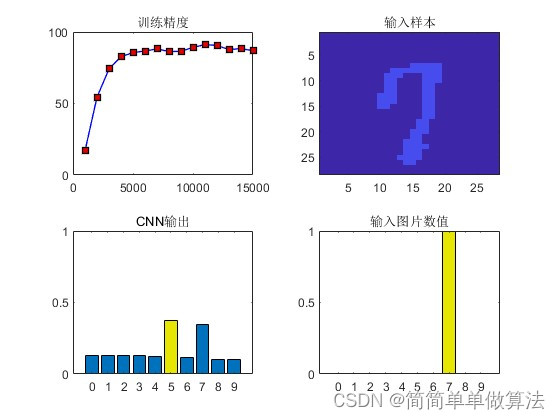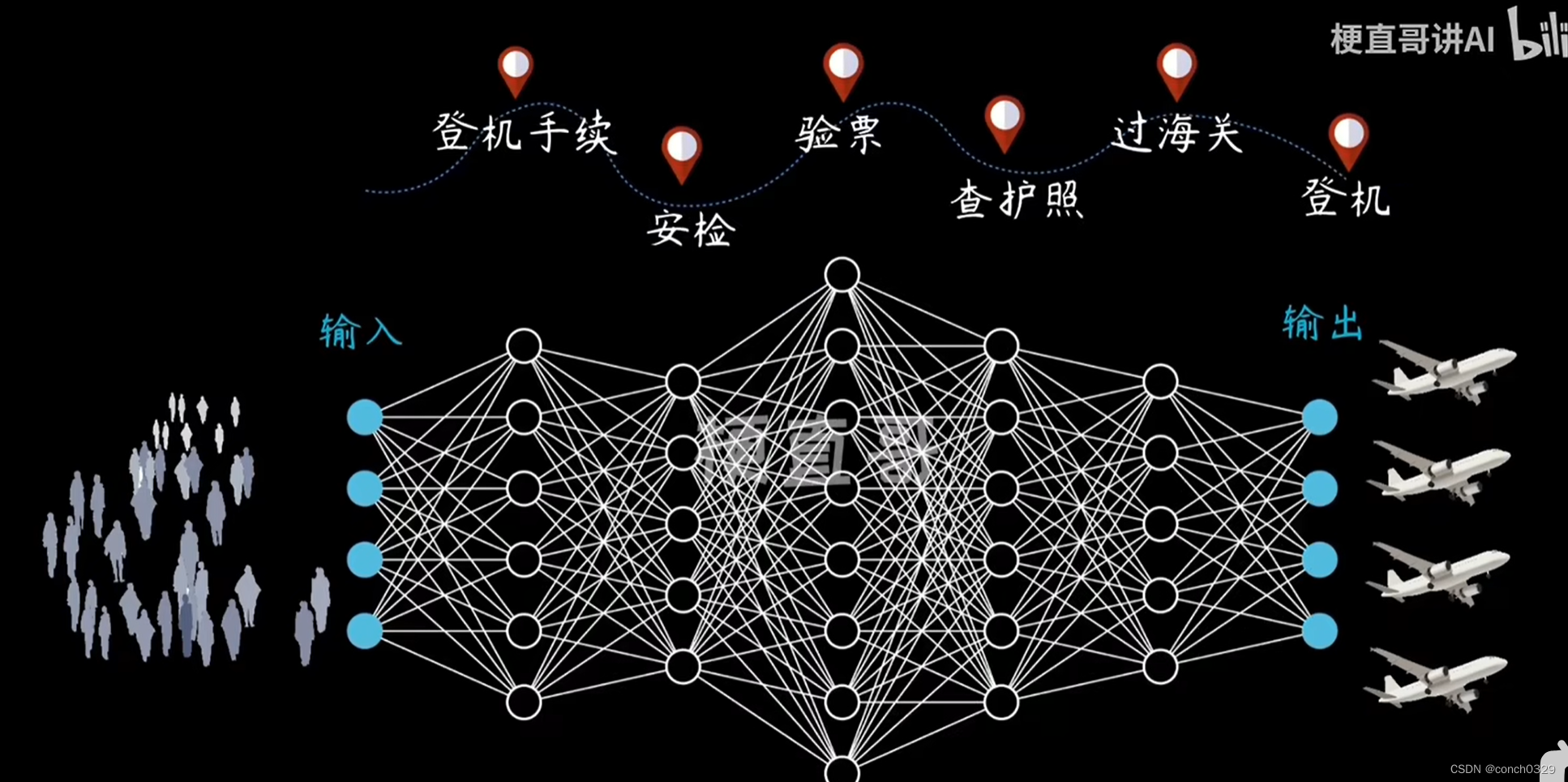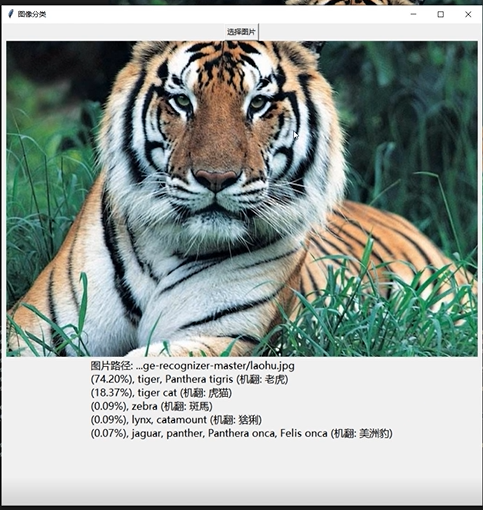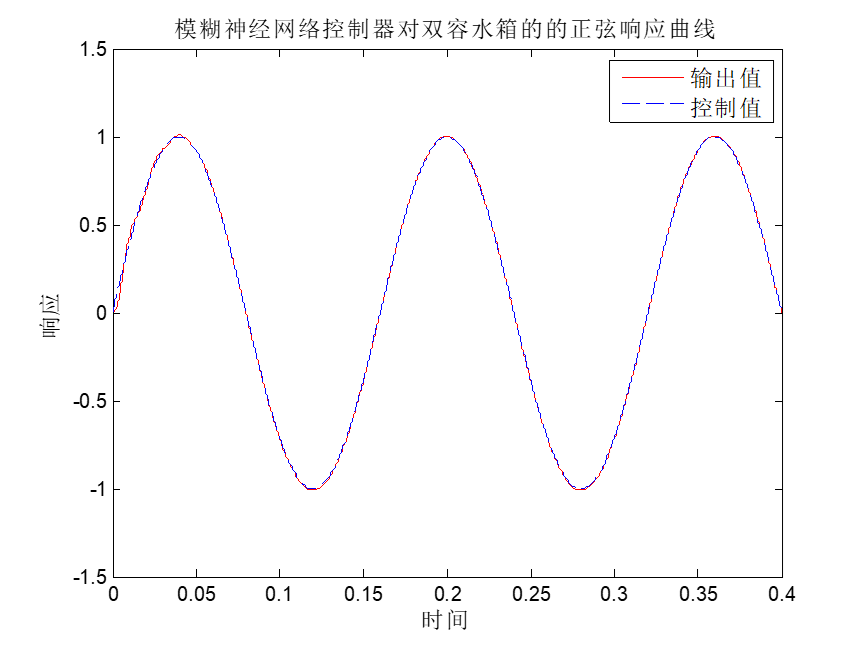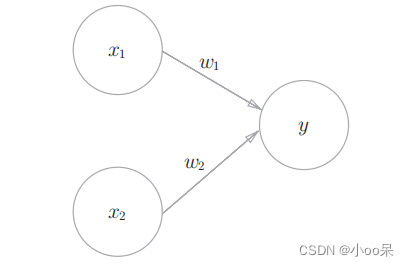本文介绍: 语言环境:Python3.6.5编译器:jupyter notebook深度学习环境:TensorFlow2.4.1卷积神经网络(CNN)实现mnist手写数字识别卷积神经网络(CNN)多种图片分类的实现卷积神经网络(CNN)衣服图像分类的实现卷积神经网络(CNN)鲜花识别卷积神经网络(CNN)天气识别卷积神经网络(VGG-16)识别海贼王草帽一伙卷积神经网络(ResNet-50)鸟类识别卷积神经网络(AlexNet)鸟类识别卷积神经网络(CNN)识别验证码。
一、前言
我的环境:
往期精彩内容:
- 卷积神经网络(CNN)实现mnist手写数字识别
- 卷积神经网络(CNN)多种图片分类的实现
- 卷积神经网络(CNN)衣服图像分类的实现
- 卷积神经网络(CNN)鲜花识别
- 卷积神经网络(CNN)天气识别
- 卷积神经网络(VGG-16)识别海贼王草帽一伙
- 卷积神经网络(ResNet-50)鸟类识别
- 卷积神经网络(AlexNet)鸟类识别
- 卷积神经网络(CNN)识别验证码
- 卷积神经网络(Inception-ResNet-v2)交通标志识别
二、前期工作
1. 设置GPU(如果使用的是CPU可以忽略这步)
import tensorflow as tf
gpus = tf.config.list_physical_devices("GPU")
if gpus:
tf.config.experimental.set_memory_growth(gpus[0], True) #设置GPU显存用量按需使用
tf.config.set_visible_devices([gpus[0]],"GPU")
2. 导入数据
import matplotlib.pyplot as plt
# 支持中文
plt.rcParams['font.sans-serif'] = ['SimHei'] # 用来正常显示中文标签
plt.rcParams['axes.unicode_minus'] = False # 用来正常显示负号
import os,PIL,random,pathlib
# 设置随机种子尽可能使结果可以重现
import numpy as np
np.random.seed(1)
# 设置随机种子尽可能使结果可以重现
import tensorflow as tf
tf.random.set_seed(1)
data_dir = "015_licence_plate"
data_dir = pathlib.Path(data_dir)
pictures_paths = list(data_dir.glob('*'))
pictures_paths = [str(path) for path in pictures_paths]
pictures_paths[:3]
3. 查看数据
image_count = len(list(pictures_paths))
print("图片总数为:",image_count)
图片总数为: 13056
# 获取数据标签
all_label_names = [path.split("_")[-1].split(".")[0] for path in pictures_paths]
all_label_names[:3]
['川W9BR26', '沪E264UD', '浙E198UJ']
3.数据可视化
plt.figure(figsize=(10,5))
plt.suptitle("数据示例",fontsize=15)
for i in range(20):
plt.subplot(5,4,i+1)
plt.xticks([])
plt.yticks([])
plt.grid(False)
# 显示图片
images = plt.imread(pictures_paths[i])
plt.imshow(images)
# 显示标签
plt.xlabel(all_label_names[i],fontsize=13)
plt.show()

4.标签数字化
char_enum = ["京","沪","津","渝","冀","晋","蒙","辽","吉","黑","苏","浙","皖","闽","赣","鲁",
"豫","鄂","湘","粤","桂","琼","川","贵","云","藏","陕","甘","青","宁","新","军","使"]
number = [str(i) for i in range(0, 10)] # 0 到 9 的数字
alphabet = [chr(i) for i in range(65, 91)] # A 到 Z 的字母
char_set = char_enum + number + alphabet
char_set_len = len(char_set)
label_name_len = len(all_label_names[0])
# 将字符串数字化
def text2vec(text):
vector = np.zeros([label_name_len, char_set_len])
for i, c in enumerate(text):
idx = char_set.index(c)
vector[i][idx] = 1.0
return vector
all_labels = [text2vec(i) for i in all_label_names]
二、构建一个tf.data.Dataset
1.预处理函数
def preprocess_image(image):
image = tf.image.decode_jpeg(image, channels=1)
image = tf.image.resize(image, [50, 200])
return image/255.0
def load_and_preprocess_image(path):
image = tf.io.read_file(path)
return preprocess_image(image)
2.加载数据
构建 tf.data.Dataset 最简单的方法就是使用 from_tensor_slices 方法。
AUTOTUNE = tf.data.experimental.AUTOTUNE
path_ds = tf.data.Dataset.from_tensor_slices(pictures_paths)
image_ds = path_ds.map(load_and_preprocess_image, num_parallel_calls=AUTOTUNE)
label_ds = tf.data.Dataset.from_tensor_slices(all_labels)
image_label_ds = tf.data.Dataset.zip((image_ds, label_ds))
image_label_ds
train_ds = image_label_ds.take(5000).shuffle(5000) # 前1000个batch
val_ds = image_label_ds.skip(5000).shuffle(1000) # 跳过前1000,选取后面的
3.配置数据
BATCH_SIZE = 16
train_ds = train_ds.batch(BATCH_SIZE)
train_ds = train_ds.prefetch(buffer_size=AUTOTUNE)
val_ds = val_ds.batch(BATCH_SIZE)
val_ds = val_ds.prefetch(buffer_size=AUTOTUNE)
val_ds
三、搭建网络模型
目前这里主要是带大家跑通代码、整理一下思路,大家可以自行优化网络结构、调整模型参数。后续我也会针对性的出一些调优的案例的。
from tensorflow.keras import datasets, layers, models
model = models.Sequential([
layers.Conv2D(32, (3, 3), activation='relu', input_shape=(50, 200, 1)),#卷积层1,卷积核3*3
layers.MaxPooling2D((2, 2)), #池化层1,2*2采样
layers.Conv2D(64, (3, 3), activation='relu'), #卷积层2,卷积核3*3
layers.MaxPooling2D((2, 2)), #池化层2,2*2采样
layers.Flatten(), #Flatten层,连接卷积层与全连接层
# layers.Dense(1000, activation='relu'), #全连接层,特征进一步提取
layers.Dense(1000, activation='relu'), #全连接层,特征进一步提取
layers.Dropout(0.3),
layers.Dense(label_name_len * char_set_len),
layers.Reshape([label_name_len, char_set_len]),
layers.Softmax() #输出层,输出预期结果
])
# 打印网络结构
model.summary()
Model: "sequential"
_________________________________________________________________
Layer (type) Output Shape Param #
=================================================================
conv2d (Conv2D) (None, 48, 198, 32) 320
_________________________________________________________________
max_pooling2d (MaxPooling2D) (None, 24, 99, 32) 0
_________________________________________________________________
conv2d_1 (Conv2D) (None, 22, 97, 64) 18496
_________________________________________________________________
max_pooling2d_1 (MaxPooling2 (None, 11, 48, 64) 0
_________________________________________________________________
flatten (Flatten) (None, 33792) 0
_________________________________________________________________
dense (Dense) (None, 1000) 33793000
_________________________________________________________________
dropout (Dropout) (None, 1000) 0
_________________________________________________________________
dense_1 (Dense) (None, 483) 483483
_________________________________________________________________
reshape (Reshape) (None, 7, 69) 0
_________________________________________________________________
softmax (Softmax) (None, 7, 69) 0
=================================================================
Total params: 34,295,299
Trainable params: 34,295,299
Non-trainable params: 0
_________________________________________________________________
四、设置动态学习率
- 学习率大
- 学习率小
注意:这里设置的动态学习率为:指数衰减型(ExponentialDecay)。在每一个epoch开始前,学习率(learning_rate)都将会重置为初始学习率(initial_learning_rate),然后再重新开始衰减。计算公式如下:
learning_rate = initial_learning_rate * decay_rate ^ (step / decay_steps)
# 设置初始学习率
initial_learning_rate = 1e-3
lr_schedule = tf.keras.optimizers.schedules.ExponentialDecay(
initial_learning_rate,
decay_steps=50, # 敲黑板!!!这里是指 steps,不是指epochs
decay_rate=0.96, # lr经过一次衰减就会变成 decay_rate*lr
staircase=True)
# 将指数衰减学习率送入优化器
optimizer = tf.keras.optimizers.Adam(learning_rate=lr_schedule)
五、编译
model.compile(optimizer=optimizer,
loss='categorical_crossentropy',
metrics=['accuracy'])
六、训练
epochs = 50
history = model.fit(
train_ds,
validation_data=val_ds,
epochs=epochs
)
八、保存和加载模型
# 保存模型
model.save('model/15_model.h5')
# 加载模型
new_model = tf.keras.models.load_model('model/15_model.h5')
九、预测
def vec2text(vec):
"""
还原标签(向量->字符串)
"""
text = []
for i, c in enumerate(vec):
text.append(char_set[c])
return "".join(text)
plt.figure(figsize=(10, 8)) # 图形的宽为10高为8
for images, labels in val_ds.take(1):
for i in range(6):
ax = plt.subplot(5, 2, i + 1)
# 显示图片
plt.imshow(images[i])
# 需要给图片增加一个维度
img_array = tf.expand_dims(images[i], 0)
# 使用模型预测验证码
predictions = model.predict(img_array)
plt.title(vec2text(np.argmax(predictions, axis=2)[0]),fontsize=15)
plt.axis("off")

原文地址:https://blog.csdn.net/weixin_45822638/article/details/134632739
本文来自互联网用户投稿,该文观点仅代表作者本人,不代表本站立场。本站仅提供信息存储空间服务,不拥有所有权,不承担相关法律责任。
如若转载,请注明出处:http://www.7code.cn/show_14801.html
如若内容造成侵权/违法违规/事实不符,请联系代码007邮箱:suwngjj01@126.com进行投诉反馈,一经查实,立即删除!
声明:本站所有文章,如无特殊说明或标注,均为本站原创发布。任何个人或组织,在未征得本站同意时,禁止复制、盗用、采集、发布本站内容到任何网站、书籍等各类媒体平台。如若本站内容侵犯了原著者的合法权益,可联系我们进行处理。

